View the Inspiration Report above or download the PDF version here.
View the Inspiration Report above or download the PDF version here.
Add a Multimedia Studio space to the Mack High School Library for academic and personal creative learning experiences. Trained staff will be available for programs and in-person or virtual guided workshops. The studio will be open to students, teachers, and staff at MHS and will be designed for HOMAGO – a space where students can Hang Out together, Mess Around with the technology, and Geek Out by creating original content (Yollocalli Arts Reach, 2013).
The studio will include:
Users will be able to:
MHS is a small high school in a rural area. The school district’s Local Control Accountability Plan reports that over 43% of students are socio-economically disadvantaged and in need of additional academic support (NHUHSD, 2025). Concerns include declining academic motivation and school connectedness. Goals were set to create community-building activities where students can meaningfully participate and to develop project-based learning that involves student voice and choice.
Implementing a Multimedia Studio in the school library aids district goals. Students can actively design the space and use it to learn new skills. This is especially important for students who would not otherwise have access to technology or guided learning opportunities. The studio will connect them to the school as well as allow them to make connections to future aspirations.
Goal I: Increase digital literacy skills through creative exploration.
Objective 1: Integrate digital tools into library programming.
In an effort to connect students with their school and develop a greater sense of belonging, the technology, space, and workshops will be integrated into an existing community space. Students will help design and choose the elements that are the most important and of interest to them to help prepare them for future college and career aspirations.
Objective 2: Promote inclusive and equitable access to technology.
To bridge the digital divide in the community, access to the studio’s technology will be made available during various hours of the day. Additionally, trained staff will be onsite to aid students as well as to run guided learning workshops.
Goal II: Minimize learning loss through creative engagement.
Objective 1: Encourage student-led exploration.
In order to create a method for meaningful participation by students, they will lead the growth of the studio project. Programs and workshops will be designed based on student request and input, and peer-to-peer tutoring and engagement will be encouraged.
Objective 2: Develop interdisciplinary learning opportunities.
To support the academic achievements of students, collaboration with teachers and staff will create avenues for project-based learning that can connect to real world applications.
A Multimedia Studio will align with district, school, and library mission statements by supporting students’ personal and academic growth and by providing resources to encourage lifelong learning. This can lead to a successful integration of a new technological service while not overwhelming staff (Stephens, 2004).
The school district will… “provide the highest quality, comprehensive education in a safe, supportive environment, by promoting a culture of academic excellence, innovation and creativity; ensuring an outstanding, passionate staff committed to student achievement; encouraging acceptance of and appreciation for diversity; and offering a wide range of curricular and extracurricular activities for all students” (NHUHSD, n.d.).
The school site will… “foster an inclusive community where all individuals can excel both personally and academically by empowering learners with meaningful skills in a safe and supportive environment” (MHS, n.d.-a).
The school library will… “provide access to current, adequate and appropriate information resources and ensure that all students and staff members are effective users of ideas and information” (MHS, n.d.-b).
Convince high school students at MHS
…that by: using the Multimedia Studio in their library
…they will: learn new skills and create new content
…which will: help them with class assignments and add to their skill sets and resumés,
…because: through creativity and digital literacy they can be confident and successful in future academics & careers.
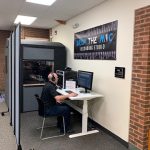 Charles County Public Library |
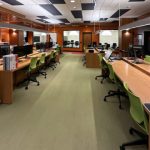 Fountaindale Public Library District |
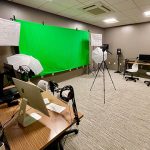 Martin Public Library |
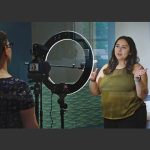 Topeka & Shawnee County Public Library |
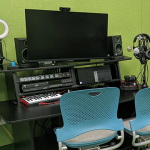 Wichita Public Library |
Fall – Define Goals
Winter – Inform Users
Spring – Get Feedback
Summer – Install & Train
Fall – Use & Evaluate
Library and IT staff are tasked with student, facility, and equipment safety and so will be the ones to create policies that align with school rules and guidelines.
Multimedia Studio Policies
The Multimedia Studio will be promoted through various channels including in person announcements, visual displays, and collaborative efforts. Communications by students, for students will be emphasized through student-led social media posts and videos.
On Campus
Off Campus & Online
Library staff will receive training for the use of equipment and technology as well as the necessary software. This will be aided by IT staff or by outside professional development opportunities.
The library can then offer workshops for students, teachers, and staff to learn new skills. These may be in-person or created as online and asynchronous tutorials. As new ideas emerge through participation and exploration, additional training may be undertaken collaboratively.
Evaluation will be based on both observed use by library staff and anecdotal feedback. Students sharing their original content for library displays or school social media posts as well as for projects submitted as class assignments will inform library staff and administration of use. Student and staff feedback about the studio’s limitations or possibilities for additional equipment will be valuable in assessing future adaptations. Though technology will continually be evolving and library staff should be open to any changes, the needs and interests of the students (and budget restrictions) will determine how and to what extent the Multimedia Studio will expand (Stephens, 2019).
Casey, M. & Stephens, M. (2008, April 15). Measuring progress. Tame the Web.
Charles County Public Library. (n.d.). Drop the Mic Recording Studio.
Fountaindale Public Library. (n.d.). Studio 300.
Martin Public Library. (n.d.). Sound and Video Recording Studio.
McKinleyville High School. (n.d.-a). Our vision.
McKinleyville High School. (n.d.-b). Welcome to the library!
Northern Humboldt Union High School District. (n.d.). Vision, mission and goals.
Northern Humboldt Union High School District. (2025). LCAP.
San Francisco Public Library. (2024). Vision 2030: San Francisco Public Library strategic plan: 2024-2030.
Stephens, M. (2004, November 1). Technoplans vs. technolust. Tame the Web.
Stephens, M. (2019). Wholehearted librarianship: Finding hope, inspiration, and balance. ALA Editions.
Topeka & Shawnee County Public Library. (n.d.). Level 2 Tech Center.
Wichita Public Library. (n.d.). AV Studio.
Yollocalli Arts Reach. (2013, February 13). HOMAGO guidebook. Issuu.
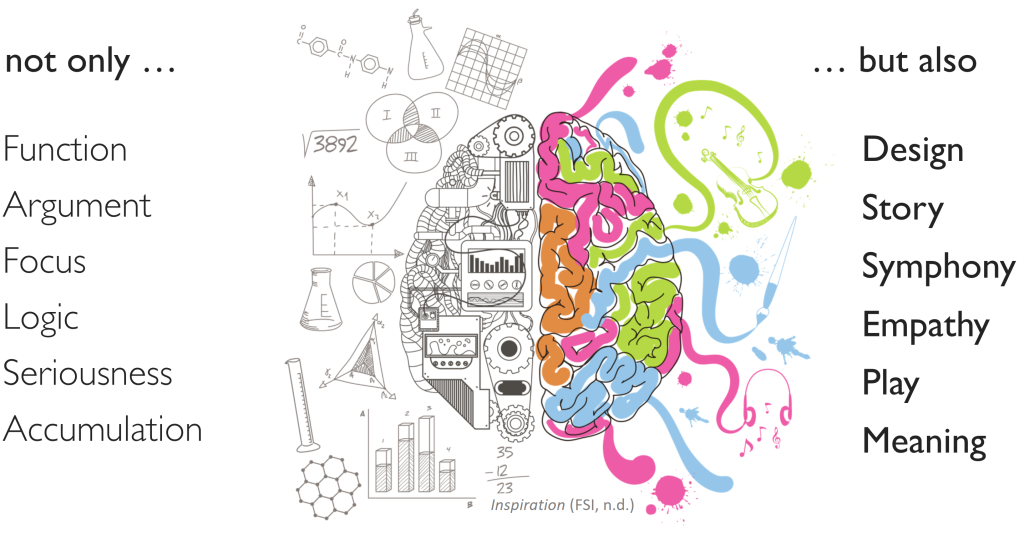
These six words were introduced in the lecture on the Hyperlinked Library Model (Stephens, 2025) to describe the creative senses needed to guide and shape the world. I was drawn to the simplicity of how the concepts were displayed, reduced to singular and powerful words. I spent a few moments reflecting on each as well as their combinations. Later in the lecture, another word caught my attention. Instead of aligning with my perception of the library field, it challenged me. I generally use this seventh word in a negative manner, but within the Hyperlinked Library Model it is to be embraced.
So what do these words mean in the context of hyperlinked libraries?
My first thought is space – physical and virtual – and the design of spaces that help connect people to resources and each other. The original author of the six senses, Daniel Pink, described design as a blend of aesthetics and functionality (Roy, 2006). Additionally, Skot-Hansen (2017) discussed the Four-Space Model used in Danish libraries to foster information sharing and experience. By creating separate and overlapping spaces with different purposes, connections develop through experience, empowerment, involvement, and innovation.
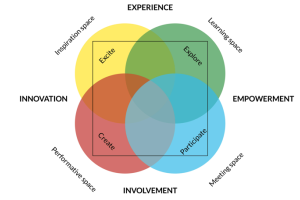
The Four-Space Model (Skot-Hansen, 2017)
Every individual has their own story that colors their interactions with the world. Beyond books that tell us tales of real and imagined people, libraries not only curate collections, but create new ways of collecting, making, and sharing stories. In Wholehearted Librarianship, Stephens (2019) discussed several examples of this work, from podcasts to live and recorded storytelling events. The common factor was building connections in the community – unique experiences connecting to a shared humanity.

Another example: Language Café at DOK
Music can be made up of many different elements, whether they’re instruments, melodies, or percussions. What matters is that they all create unique sounds to make a harmonious whole. This is the core idea behind participatory culture – people do not just consume information and media, they create and share it, too. For example, Boekesteijn (2011) discussed a multitouch table at DOK in the Netherlands where visitors could engage with and contribute to community conversations.
As librarians – as humans – we cannot help each other if we cannot understand or connect with one another. In The Heart of Librarianship, Stephens (2016) discussed empathy as an important factor in engaging with people. The more kindness and understanding we exercise, the more welcome and comfortable people will be when seeking resources and participating in activities. This cultivates trust and respect and allows for user-centered thinking and collaboration.

Unquiet Library (Hamilton, 2010)
I think of programs offered at my local library providing opportunities for fun and play. Douglas Thomas and John Seely Brown described play as “the basis for cultivating imagination and innovation” (Stephens, 2025, 10:50). Play is linked to lifelong learning through experimentation and iteration without worry of real world consequences. Mathews (2010) discussed a high school’s “Unquiet Library” offering a variety of spaces, activities, and learning opportunities. Students took pride in their library where they found enriching educational and social experiences.
My first thought is purpose and significance – the impact something can have in creating relevance. Relatedly, Stephens (2025) described meaning as the “context to life”. Through authentic connections with people, resources, and services, that meaning can be appreciated. Mattern (2014) discussed the library as social infrastructure, noting that libraries reach a variety of people, including children, seniors, immigrants, and entrepreneurs. Communities form around diverse needs and libraries work to meet them where they are.
Disorganized. Frustrating. Out of control. These can be bad things in my mind, but that doesn’t mean avoidance is any better. The key message here is that chaos comes from change when we are not prepared for it. However, change is necessary to meet a constantly changing world. As Michael Stephens put it, “Hyperlinked library services are born from the constant, positive, and purposeful adaptation to change that is based on thoughtful planning and grounded in the mission of libraries” (2025, 35:28).
These six senses weave together and make it difficult to address them singularly. And chaos? Perhaps it isn’t a sense, but it is a piece of the ever-evolving landscape of the library field. As information professionals, we must embrace change to incorporate these concepts into our work. Chaos will be inevitable, but the more flexible we can be with change, the easier the experience of chaos will be.
I work in a high school library and last week was the end of the school year. I ordinarily associate the last week with chaos – teenagers procrastinate returning their materials and forget what they’ve checked out since August, and I dread the rush of panic and questions. This year, we planned ahead. Without realizing it until now, we were incorporating these concepts into our plan by designing an open physical space (design), connecting with teachers for open communication (symphony), and allowing time to connect with students individually (empathy). It was a success! I will most definitely keep these six senses in my back pocket to use in future work and in my day-to-day life.
Boekesteijn, E. (2011, February 15). DOK Delft takes user generated content to the next level. Tame the Web.
FSI. (n.d.). Inspiration.
Hamilton, B. (2010, March 10). February 2010 Monthly Report The Unquiet Library. SlideShare.
Mathews, B. (2010, June 21). Unquiet library has high-schoolers geeked. American Libraries Magazine.
Mattern, S. (2014, June). Library as infrastructure. Places Journal.
Roy, S. (2006, March). A whole new mind: Daniel Pink’s engaging book addresses the keys to success in a creativity-driven economy. DDI: Display & Design Ideas, 18(3).
Skot-Hansen, D. (2017, August). Library development: From collection to connection. University of Copenhagen, Faculty of Humanities.
Stephens, M. (2016). The heart of librarianship: Attentive, positive, and purposeful change. ALA Editions.
Stephens, M. (2019). Wholehearted librarianship: Finding hope, inspiration, and balance. ALA Editions.
Stephens, M. (2025). [Video lecture on The Hyperlinked Library Model.] Retrieved June 10, 2025, from the course site for INFO 287: The Hyperlinked Library at San Jose State University.
© 2025 StorySpark
Theme by Anders Noren — Up ↑